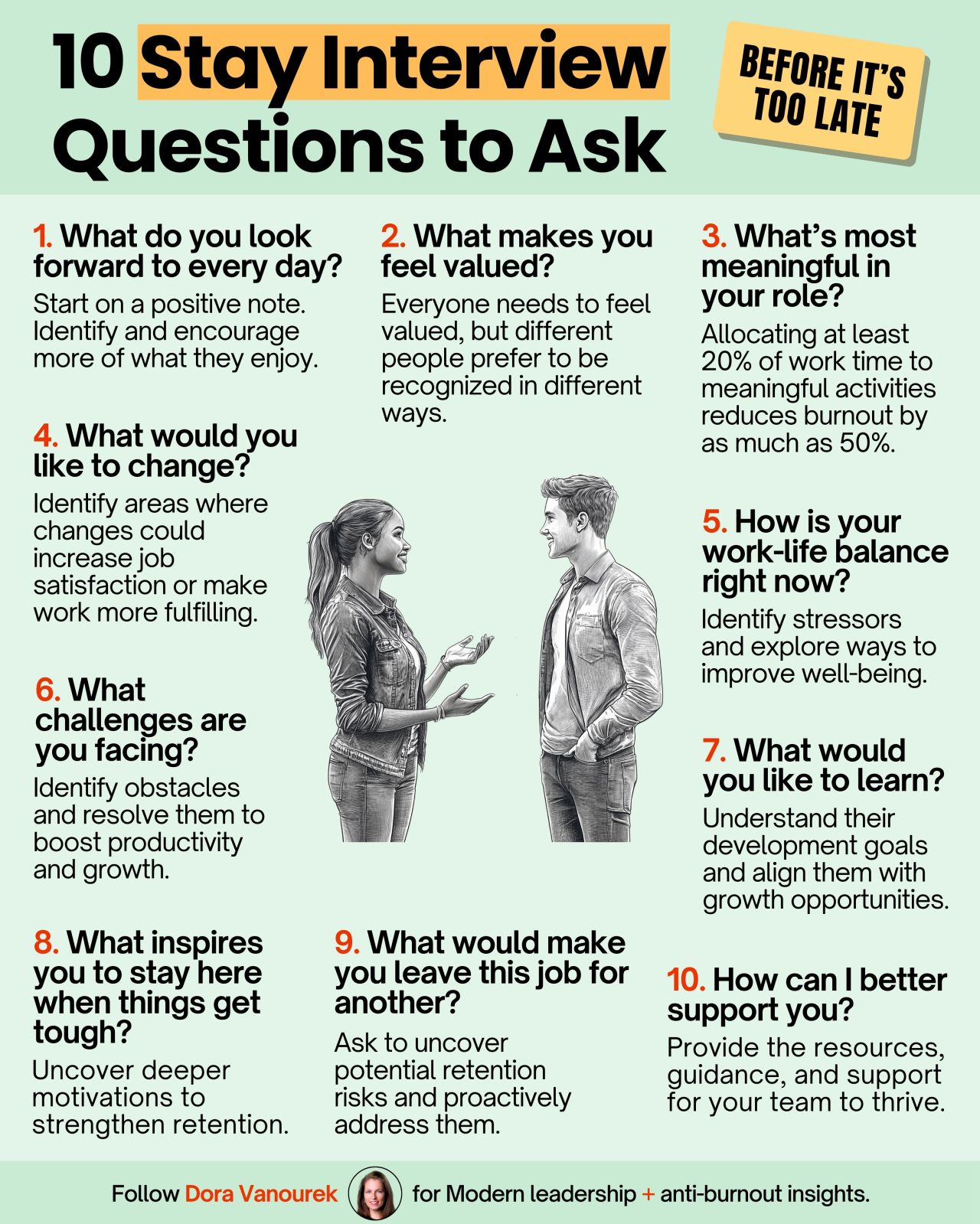share on
Should we really wait until employees leave to ask the right questions? Stay interviews let you address concerns, boost engagement, and keep top talent.
Employee turnover is more than just a numbers game — it costs organisations thousands of dollars and countless hours to replace talent. In response, HR leaders are embracing innovative strategies to keep their top performers engaged.
Exit interviews function as a retrospective on an employee’s time at the organisation, shedding light on unresolved issues or overlooked concerns. Typical questions might include:
- What factors contributed most to your decision to leave?
- How would you describe your overall experience working here?
- Were there any policies or practices that hindered your ability to do your job effectively?
- What could we have done differently to retain you?
While exit interviews offer valuable insights, they often come too late to make a meaningful impact. This realisation has fuelled the rise of stay interviews — a proactive method for understanding and addressing employees’ needs before they decide to leave.
This underscores the need for a more forward-thinking approach. Enter stay interviews: intentional, open dialogues that empower companies to act on feedback in real time, fostering engagement and retaining talent before it's too late.
In that vein, comes the fruition of stay interviews. Stay interviews are structured conversations between managers and their employees aimed at uncovering what keeps employees engaged and what could make their experience better. Unlike exit interviews, these discussions happen while employees are still actively contributing to the organisation, offering an opportunity to act on feedback in real time.
Recently, a LinkedIn post by Dora Vanourek, Founder & Head Coach, Beyond the Grind, gained traction for its compelling take on stay interviews and a thoughtfully curated list of questions designed to foster meaningful dialogue.
These questions delve into everything from career aspirations to barriers to productivity, helping leaders align organisational goals with individual needs. Here are some of the highlights:
- What do you look forward to every day? It identifies and encourages more of what your employee enjoys.
- How is your work-life balance right now? Identifying and addressing stressors can improve your employees overall wellbeing.
- What would make you leave your job for another? Allows for effective communication and uncovers potential retention risks.
- How can I better support you? Provides the resources, guidance and support that your team needs to thrive.
- What’s most meaningful in your current role? Allocating at least 20% of your work time to meaningful activities reduces the feeling of burnout by as much as 50%.

These conversations help managers build trust, uncover actionable insights, and demonstrate genuine care for their team members. By addressing employee concerns early, companies will be able to foster a culture of engagement and loyalty.
How to implement stay interviews with your employees
For HR professionals looking to adopt this strategy, here are some actionable tips:
- Schedule stay interviews periodically, such as during quarterly check-ins.
- Create a safe, judgment-free space to encourage honest feedback.
- Document responses and follow through on actionable suggestions.
- Tailor the questions to align with organisational culture and individual roles.
To summarise, in an era where talent retention is critical, stay interviews offer a powerful tool for fostering engagement and driving meaningful change. By proactively addressing employee needs, organisations can create an environment where talent thrives, reducing turnover and enhancing overall satisfaction.
READ MORE: 5 tips for maintaining a healthy work-life balance
Infographics / Dora Vanourek's LinkedIn post
share on
Follow us on Telegram and on Instagram @humanresourcesonline for all the latest HR and manpower news from around the region!
Related topics


